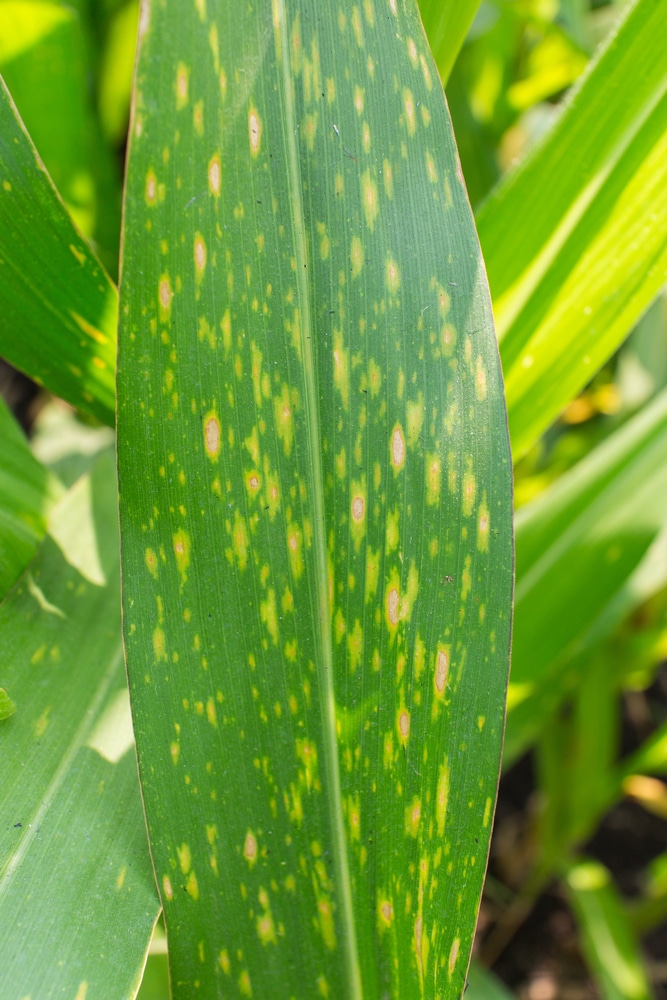
rolfsii are a key identifying feature they are small balls similar in appearance to Dijon mustard seeds that change in color from white to golden to reddish-brown (see image). The Southern Blight pathogen also produces overwintering bodies called sclerotia under the right environmental conditions (typically high humidity with temperatures about 80 ☏, but sclerotia were found on beets in cold storage at 40 ☏). Fungal mycelium is also usually present as a thick white mat around the base of the stem. Upon closer inspection, affected plants often have reddish-brown dry lesions at the soil line.

The most common symptom observed in the field is wilting or collapse of the plant. Given the broad host range of the pathogen that includes over 1,200 crops and weeds, it is imperative that growers who suspect a possible Southern Blight infestation on their farm contact extension to confirm the diagnosis to assist with optimizing crop rotations to reduce soilborne inoculum. rolfsii on golden storage beets in Dutchess County. Increase in the incidence of Southern Blight in New York over the past several years. rolfsii incidence on potato and maximize tuber yield.Southern Blight is caused by the fungal pathogen Sclerotium rolfsii and has historically only been a concern to growers in southern states. This study indicates early planting dates and cultivar selection are an effective management approach to reduce S. rolfsii than fresh market cultivars however, additional studies are needed to elucidate potential mechanisms of disease resistance.

Potato chipping cultivars tended to be less impacted by S. Conversely, ‘Adirondack Blue’ and ‘Dark Red Norland’ had the overall greatest incidence of S. Though cultivar responses varied across planting date-years, ‘Accumulator’ had the lowest disease incidences (36%) and greatest tuber yield (20.2 Mg ha -1) among tested cultivars. Planting date effects were likely driven by humid, warm weather later in the season that was conducive to disease and detrimental to crop development.

Despite the planting date by cultivar interaction, later plantings had greater disease incidence (85–94%) and lower tuber yield (1.8–9.4 Mg ha -1) and quality (47–78% marketable tubers) than earlier plantings. Disease incidence varied by year, with fewer occurrences in 2019 (25%) than in 2018 (79%) or 2017 (64%), likely due to dry and warm weather. This study evaluated impacts of four planting dates, ten commercial cultivars, and integrated effects of planting date and cultivar on southern blight incidence, yield, and tuber quality. To date, no potato cultivar is resistant to southern blight, and effective management with fumigants and fungicides has been inconsistent and uneconomical. in potato ( Solanum tuberosum L.) has increased across the mid-Atlantic region. Incidence of southern blight caused by Sclerotium rolfsii Sacc.


 0 kommentar(er)
0 kommentar(er)
